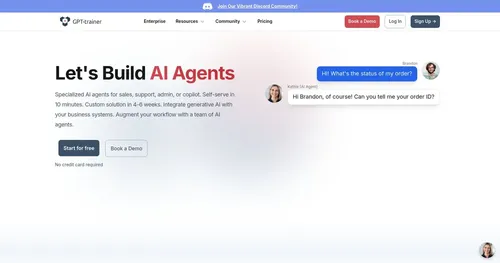Sim

Sim AI is an open-source platform for building AI-powered workflows using a visual drag-and-drop interface, enabling automation and data processing without coding. It supports over 80 integrations, including Gmail, Slack, and GitHub, and connects to AI models like OpenAI, Anthropic, and local Ollama models. The platform is designed for developers, businesses, and teams aiming to automate tasks or create intelligent agents. It offers both a cloud-hosted version and a self-hosted option via Docker or NPM.
Key features include the visual canvas, where users connect blocks to build workflows, and the Copilot assistant, which suggests edits and explains settings. The knowledgebase processes documents like PDFs or Excel files, creating searchable chunks with vector search. Real-time collaboration allows teams to edit workflows simultaneously. Deployment options include one-click API deployment and monitoring tools for production use. The platform supports triggers like chat interfaces, webhooks, or scheduled jobs.
Compared to n8n and Zapier, Sim AI offers more developer control due to its open-source nature, but its interface is less polished than Zapier’s. Setup for self-hosting requires technical skills, including Docker and API key configuration. Some users report bugs in the cloud version, though updates are frequent. Pricing includes a free cloud option and self-hosted setups, which may be more cost-effective than competitors.
The knowledgebase’s vector search is a standout, enabling fast data retrieval for AI agents. Documentation is detailed, with tutorials like “Getting Started” guiding users through agent creation. However, advanced workflows may require a learning curve, and self-hosting can be complex for non-technical users.
To begin, use the cloud-hosted version for quick setup. Test simple integrations first, such as connecting Notion to Slack. Refer to the documentation for detailed guidance, and leverage the GitHub community for support.
Video Overview ▶️
What are the key features? ⭐
- Visual Canvas: Drag-and-drop blocks to build AI workflows without coding.
- Copilot Assistant: Suggests edits and explains workflow settings in real-time.
- Knowledgebase: Processes documents into searchable chunks with vector search.
- Integrations: Connects to over 80 tools, including Gmail, Slack, and GitHub.
- Real-Time Collaboration: Enables teams to edit workflows simultaneously.
Who is it for? 🤔
Examples of what you can use it for 💭
- Developer: Creates a chatbot that pulls GitHub issues into Slack for team updates.
- Business Owner: Automates customer support by connecting Gmail to a CRM for ticket creation.
- Data Analyst: Processes Excel files with the knowledgebase to extract insights for reports.
- Marketing Team: Syncs Notion campaign data with Google Sheets for performance tracking.
- Freelancer: Builds a workflow to send WhatsApp reminders based on calendar events.
Pros & Cons ⚖️
- Intuitive drag-and-drop interface
- Supports 80+ integrations
- Open-source and flexible
- Steep learning curve for advanced use
- Self-hosting setup is complex
FAQs 💬
Related tools ↙️
-
Hamming AI Automates AI voice agent testing with thousands of simulated calls.
-
 PolyAI
Revolutionize customer service by providing businesses with sophisticated voice assistants
PolyAI
Revolutionize customer service by providing businesses with sophisticated voice assistants
-
 GPT-trainer
Build your own AI assistant who will deliver the information you need right when you need it
GPT-trainer
Build your own AI assistant who will deliver the information you need right when you need it
-
Composio An AI integration platform designed to speed up building of smart agent systems

